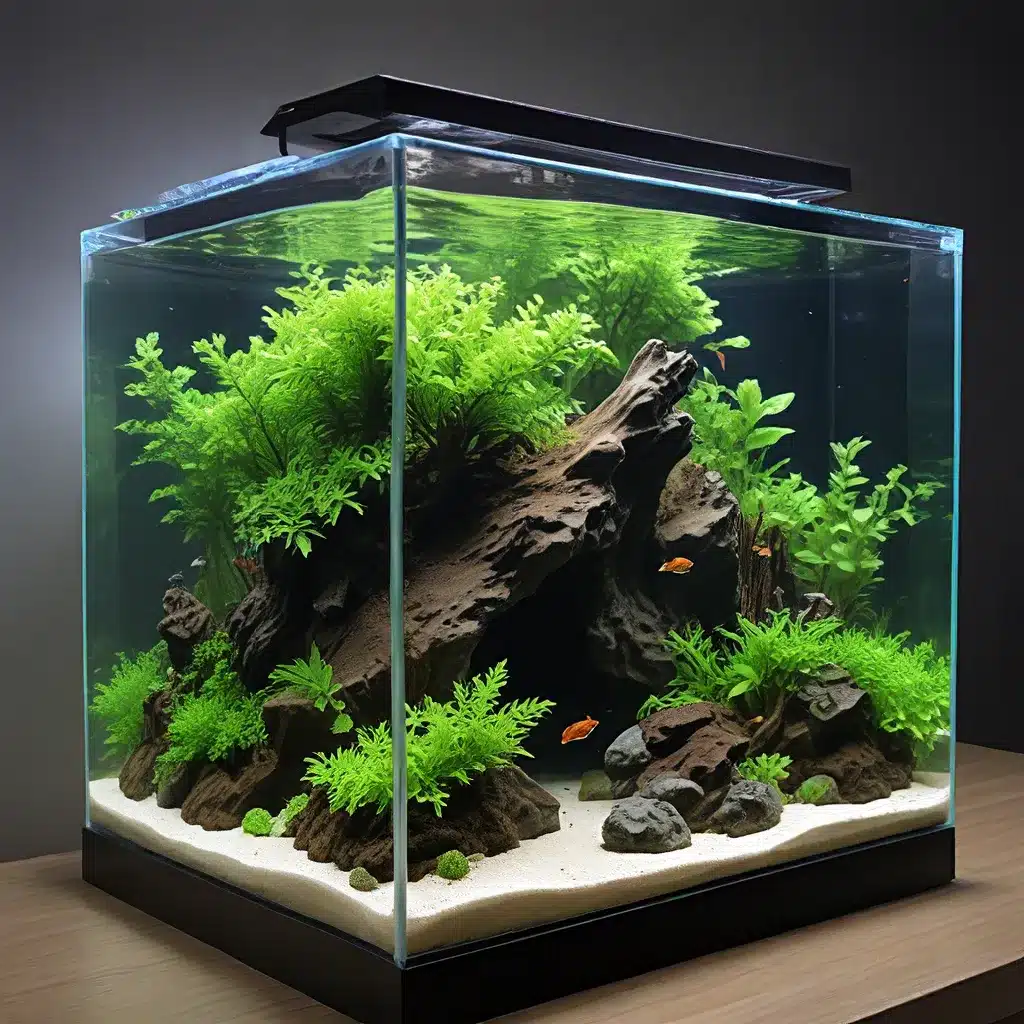
Embracing Eco-Friendly Aquarium Maintenance
As aquarium enthusiasts, we have a unique opportunity to not only enjoy the captivating underwater worlds we create but also to make a positive impact on the environment. From the selection of energy-efficient equipment to the conscious reduction of single-use plastics, there are numerous ways we can reduce the environmental footprint of our beloved aquariums.
One of the cornerstones of sustainable aquarium practices is energy efficiency. Modern aquarium technology has made great strides in this area, offering a wide range of energy-saving options for lighting, filtration, and water pumps. By carefully researching and investing in high-efficiency equipment, we can significantly reduce our energy consumption and the associated carbon emissions. This not only benefits the environment but also translates to lower utility bills, making it a win-win situation for both the aquarist and the planet.
Closely linked to energy efficiency is the concept of water conservation. Aquarium maintenance, such as water changes and top-offs, can consume a considerable amount of freshwater. By implementing strategies like utilizing water-efficient filtration systems, implementing water recycling methods, and minimizing water usage during maintenance routines, we can dramatically reduce our aquarium’s freshwater footprint. This not only conserves a precious natural resource but also aligns with the principles of sustainable aquarium practices.
Embracing the Wonders of Aquascaping
Aquascaping, the art of creating beautiful, nature-inspired underwater landscapes, can also play a crucial role in sustainable aquarium practices. By carefully selecting native or hardy aquatic plants, we can create thriving ecosystems that require minimal maintenance and support the overall health of the aquarium. These plant-based aquascapes not only enhance the visual appeal of our aquariums but also help to maintain stable water parameters, reducing the need for frequent chemical interventions.
Furthermore, the use of natural materials, such as driftwood, rocks, and substrate, can contribute to the sustainability of our aquarium setups. These elements not only add aesthetic value but also serve essential functions, such as providing hiding spots for fish, anchoring plants, and facilitating beneficial bacterial growth. By choosing these natural materials over synthetic alternatives, we minimize the environmental impact of our aquarium hobby.
Reducing Plastic Waste in Aquariums
One of the most significant challenges facing our oceans and waterways is the proliferation of single-use plastics. As aquarium enthusiasts, we have a unique opportunity to lead by example and reduce our reliance on these harmful materials. From replacing single-use plastic bags for water changes to opting for reusable filter media and equipment, there are numerous ways we can minimize the amount of plastic waste generated by our aquarium hobby.
Embracing sustainable alternatives, such as glass or stainless steel water containers, biodegradable plant pots, and reusable test kits, can make a substantial difference in reducing our plastic footprint. Additionally, exploring the use of aquarium-safe silicone or glass accessories can further contribute to the overall sustainability of our aquarium setups.
Sustainable Fish and Livestock Selection
When it comes to the selection of fish and other aquatic livestock, sustainability should also be a key consideration. Choosing species that are ethically sourced, either from reputable breeders or captive-bred populations, can help to reduce the strain on wild populations. Additionally, opting for hardy, low-maintenance fish can minimize the need for intensive care and resources, aligning with the principles of sustainable aquarium practices.
By researching and supporting responsible aquarium livestock suppliers, we can ensure that the animals we bring into our homes are cared for and their populations are not threatened. This not only benefits the species themselves but also contributes to the overall health and balance of the aquatic ecosystems we aim to recreate in our aquariums.
Implementing Sustainable Water Management Strategies
Proper water management is essential for the long-term success and sustainability of any aquarium. This involves maintaining optimal water parameters, reducing the need for frequent water changes, and minimizing the use of chemical additives.
One effective strategy is the implementation of advanced filtration systems, such as protein skimmers, ozone generators, and UV sterilizers. These technologies help to maintain water quality by removing organic waste, dissolved nutrients, and harmful pathogens, reducing the reliance on frequent water changes and the associated water and energy consumption.
Additionally, the use of live plants in our aquariums can play a crucial role in natural water purification. These aquatic plants not only enhance the visual appeal of our setups but also absorb excess nutrients, helping to maintain stable water parameters and reduce the need for chemical interventions.
Sharing Knowledge and Inspiring Others
As aquarium enthusiasts, we have a unique opportunity to not only enjoy the beauty and wonder of our underwater creations but also to inspire others to adopt more sustainable practices. By sharing our knowledge and experiences, we can encourage fellow aquarists to embrace eco-friendly aquarium maintenance techniques, sustainable aquascaping, and responsible livestock selection.
Through educational resources, social media platforms, and local aquarium communities, we can disseminate information and engage with others who share our passion for the aquarium hobby. By leading by example and sharing our sustainable aquarium practices, we can collectively make a meaningful impact on the environment and contribute to the long-term health of our aquatic ecosystems.
Remember, every small step we take towards sustainable aquarium practices can make a significant difference. By embracing energy efficiency, water conservation, responsible aquascaping, and plastic reduction, we can enjoy our aquarium hobbies while minimizing our environmental footprint. Let’s work together to create a more sustainable future for our beloved aquatic companions and the planet we all share.
For more information on sustainable aquarium practices, be sure to explore the resources available at https://kingaquarium.com/, a leading platform for aquarists and aquascaping enthusiasts.

